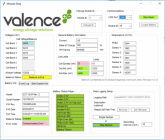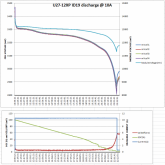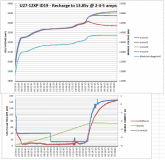Aloha. Still waiting on my batteries that I purchased from Travis who also was kind enough to turn me on to this forum thread.
In the meantime I’ve been researching solutions for how to go about monitoring my bank on my solar electric catamaran.
I have been in communication with Thunderstruck which has been mentioned here. They make an aftermarket BMS for the XP batteries. I also turned them on to the thread as well.
In my communication to them, I was trying to determine if their product activates the internal boards in the XP batteries enabling the built in under over charge protection. I had hoped that since their BMS provides 5V and is in communication with the batteries and able to get individual cell voltages in order to trigger external relays based on over under set values, that it also activated internal balancing feature of the batteries.
Unfortunately I don’t believe that they do as they have not verified if it does, and it is unlikely that it would based on the info here in the thread and the challenge many of you have had cracking the code to activate this feature.
Product development is currently on hold, but I suggested that this was a feature a lot of hobbyists would like to take advantage of. If their product could activate the built in over/under charge protection as well as balance between batteries in a series bank (a feature that is already planned), that those key features along with the features the unit already provides (setting a high and low value, monitoring each cell, and triggering an external relay for disconnect of loads or charging if threshold values are exceeded) that they would have a very usable product.
I may end up purchasing one for the time being and integrate it with my Victron MPPT chargers so that the Thunderstruck BMS’s open collector high output triggers a disconnect of the charger if a set voltage is exceeded. Certainly that is better than nothing at all. Eventually I would like the added first stage protection of the built in over under and balancing features as well.
Which brings me to this listing which just appeared on Ebay. I don’t know if anyone has seen these or has any first hand experience with them, but from what I can tell they will activate the built in boards and enable intra and inter charging and balancing.
Find many great new & used options and get the best deals for valence LZT BMS at the best online prices at eBay! Free shipping for many products!
www.ebay.com
Also, I spoke with my Dad (electronic engineer) about the challenges of monitoring and managing these batteries, and he basically said it would be about $10K to design and engineer a BMS that does what the Valence BMS does along with the ability to trigger external relays to shut off load output or charging input if a problem arises.
Thunderstruck certainly already has a head start on this. I’m hopeful they might seriously consider figuring out how to activate the internal safety features of the XP’s and add that features to their BMS product.









